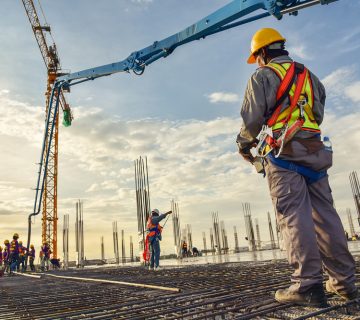California is renowned for its strict environmental laws, which are designed to protect natural resources and promote sustainable development. As environmental concerns continue to rise, state regulations are increasingly evolving, leading to significant implications for construction projects. For architects, contractors, and developers, understanding these changes is essential for ensuring compliance, managing risks, and delivering successful projects. In this blog, we will explore how California’s changing environmental laws impact construction and what industry professionals can do to adapt effectively.
Overview of Key Environmental Laws
California’s regulatory framework encompasses a variety of laws that affect construction projects, including:
- California Environmental Quality Act (CEQA): CEQA requires state and local agencies to assess the environmental impacts of proposed projects. This includes evaluating potential effects on air quality, water resources, and community health. Changes in CEQA regulations have made the review process more comprehensive, which can extend project timelines and increase costs.
- Green Building Standards Code (CALGreen): The CALGreen code sets mandatory standards for energy efficiency, water conservation, and sustainable building practices in California. Recent updates to CALGreen have introduced more stringent requirements, making it essential for architects and builders to prioritize sustainability in their designs.
- California Clean Air Act: This act regulates air quality by setting emissions standards for various sources, including construction activities. With the state’s ongoing air quality challenges, new regulations may impose stricter limits on construction emissions, requiring additional measures to control dust and pollution.
- California Water Code: This code governs the management of the state’s water resources, with specific attention to stormwater runoff and wastewater management. Recent changes have increased scrutiny on construction projects to ensure they do not harm water quality or exacerbate flooding.
- California’s Climate Goals: California has set ambitious climate goals, including achieving carbon neutrality by 2045. This overarching environmental policy influences various regulations that affect how construction projects are designed and executed, emphasizing the use of renewable energy and sustainable materials.
Impacts of Changing Environmental Laws on Construction Projects
- Increased Compliance Costs: As environmental laws evolve, compliance costs for construction projects are likely to rise. Builders may need to invest in additional resources for environmental assessments, sustainability certifications, and compliance reporting. It is crucial for project budgets to account for these potential expenses.
- Longer Approval Timelines: Stricter environmental reviews can lead to longer approval processes for construction projects. Architects and developers must prepare for potential delays and proactively engage with regulatory agencies to facilitate smoother approvals.
- Greater Liability Risks: With the increasing emphasis on environmental compliance, architects and contractors may face heightened liability risks associated with non-compliance. A failure to adhere to regulations can result in legal claims, fines, and reputational damage. Implementing robust compliance practices is critical for risk management.
- Shift Toward Sustainable Practices: California’s changing environmental laws encourage a greater focus on sustainable construction practices. Architects and builders are prompted to adopt innovative design solutions, such as energy-efficient systems, sustainable materials, and low-impact development practices. This shift not only aligns with regulatory requirements but also enhances the overall marketability of projects.
- Public Scrutiny and Community Engagement: As public awareness of environmental issues grows, construction projects are often subject to greater scrutiny from communities and stakeholders. Engaging with the public early in the planning process can help address concerns and foster support for projects.
Strategies for Navigating Changing Environmental Laws
- Stay Informed: It is essential for architects and contractors to stay informed about changes in environmental laws and regulations. Regularly reviewing updates from state agencies and participating in industry workshops can provide valuable insights into compliance requirements.
- Conduct Comprehensive Environmental Assessments: Before commencing a project, conduct thorough environmental assessments to identify potential impacts. Engaging environmental consultants can help ensure that all aspects of compliance are addressed, particularly for projects that may affect sensitive areas.
- Incorporate Sustainability into Design: Prioritizing sustainable design principles that align with California’s environmental goals can streamline compliance. This includes utilizing renewable energy sources, selecting sustainable materials, and implementing water-saving technologies.
- Build Strong Relationships with Regulatory Agencies: Establishing positive relationships with local regulatory agencies can facilitate smoother project approvals. Engaging in open communication and addressing concerns early in the process can help navigate potential challenges.
- Document Compliance Efforts: Keeping detailed records of compliance efforts, including assessments, communications, and mitigation measures, is crucial. This documentation can serve as evidence of compliance if challenges or claims arise in the future.
- Implement Training Programs: Providing training for staff and contractors on environmental compliance and best practices can foster a culture of responsibility within the firm. This ensures that everyone involved in the project understands their roles in maintaining compliance.
How We Can Help
At Stryker Slev Law Group, we understand the complexities of California’s evolving environmental laws and their implications for construction projects. Our experienced attorneys specialize in construction defect and commercial real estate law, providing comprehensive legal support tailored to the needs of architects, contractors, and developers in San Diego, Los Angeles, and Southern California.
Whether you need assistance navigating regulatory compliance, addressing environmental claims, or implementing risk management strategies, we are here to help. Our firm’s extensive knowledge of construction law positions us as a trusted partner for your legal needs.
If you are involved in a construction project and looking to understand how California’s changing environmental laws affect your work, contact Stryker Slev Law Group today. Together, we can navigate the complexities of environmental compliance and protect your interests in every project.



